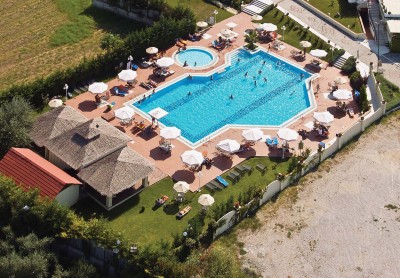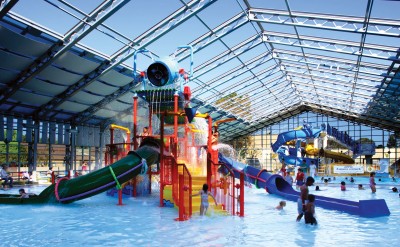Public pool applications
Aquatic facilities in the public sector are not much different from private resorts in that vision and right-sizing are critical to their success. However, because most (if not all) public pools are subsidized by local taxpayers, there is a tendency among public pool operators to ignore market forces and assume the ‘if you build it, they will come’ mantra.
This is a serious mistake. Even in the public sector, an increasing number of pool operators are adopting a more entrepreneurial approach, which involves:
- Analyzing demographics within the community served to determine how big a new or renovated facility should be;
- Researching what the competition is doing to ensure pricing and program offerings are attractive to existing and potential customers; and
- Constantly assessing where operating expenses can be reduced to improve the bottom line.
Given current economic conditions, it is more important than ever to provide decision makers with the facts necessary to ‘green light’ a new project or allocate renovation funds for an existing facility. Economic or market feasibility studies and business plans, which realistically project revenues and operating expenses, are essential tools no pool operator should be without.
Current trends
Within the public sector, the movement away from utilitarian rectilinear pools has been underway for many years now. Many cities (as well as some school districts and colleges) are embracing a project approach that includes a higher percentage of recreation programming for their aquatic facilities.

As a 50/50 split between competitive and recreational water surface area is approached, cost recovery within the facility increases dramatically. As the percentage of water surface area increases to 75 per cent recreational and 25 per cent competition, many facilities achieve break-even status (with revenues equaling operating expenses).

Recreational elements being developed for public sector facilities mimic those found in private sector waterparks or resort facilities, albeit on a much smaller scale. The key to increased cost recovery is entertainment value, which gets people in the door in the first place and increases their length of stay. For example, patrons who spend four hours or longer in a facility will likely get hungry and purchase a meal, assuming food concessions are available. Aquatic facilities with high entertainment value tend to have higher in-park spending by patrons, which usually separates successful facilities from marginal ones.
To enhance entertainment value, consider having a mix of amenities and attractions that appeal to all age groups. Toddlers, pre-teens, teenagers, parents and even grandparents need to have something to do that will boost participation rates and increase length of stay. Guest exit surveys indicate waterslides and similar thrill attractions tend to be the most popular amenities, particularly those that accommodate multiple riders or participants, such as inner tube rides. River pools, current channels and activity pools with wet play structures are also extremely popular.
Wet playgrounds have a special appeal to toddlers and pre-teens, and are even more attractive to pool operators because there is no standing water, which eliminates the need for trained lifeguards. However, a ride attendant should supervise the wet playground to keep the horseplay to a minimum and allow the little ones to have a space all their own.






